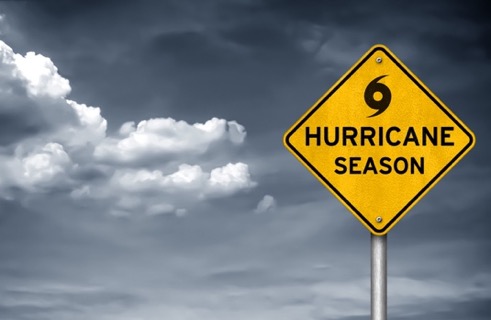Preparing for Natural Disasters: Strategies for People with Diabetes
By Elise Bourelly and Will Newton
As we enter hurricane season, here are three important steps people with diabetes can take to prepare for natural disasters
Update 7/17/20: Being prepared is more important than ever during the COVID-19 pandemic, when experiencing a hurricane or other natural disaster may be even more traumatic than usual. Click here to access our COVID-19 resources and here to learn about the Diabetes Disaster Response Coalition (DDRC). Be sure to include supplies such as hand sanitizer and face masks in your emergency diabetes kit.
According to Carol Atkinson, the director of Insulin for Life and co-chair of the DDRC, the most important thing people with diabetes can do to protect themselves from natural disasters is prepare in advance.
This is especially important given the unpredictable challenges and stress that natural disasters can cause – even during their initial warning periods. Carol Atkinson said, “A kind of panic sets off when a storm is coming your way,” she explained. “That’s not the best time to get prepared.”
Here are three prep steps from Director Carol Atkinson. Click to jump down:
2. Learn your state's laws governing emergency prescription refills.
The DDRC has an extensive diabetes preparedness plan, which includes a list of all the supplies, medication, and information you might need in the event of an evacuation or long-term power outage. This resource recommends keeping a one-week supply (or more) of medications including insulin and glucagon, if prescribed. It also suggests that if you have unused insulin, don’t throw it away! In an emergency, it is okay to use expired or non-refrigerated insulin. Beyond essential emergency supplies and medications, which are by far the most important parts of any disaster kit, Carol Atkinson highlighted two important kit components that are often overlooked:
-
Paper copies of your prescriptions and medical records. When power systems are out, as is often the case during natural disasters, pharmacies cannot renew your prescriptions electronically. Even if you have a good understanding of your diabetes and your health history, Atkinson emphasized the importance of having written records given the unpredictable, chaotic nature of any disaster.
-
Extra cash: If there’s no power in a storm, you may not have access to ATMs or your bank account, making it difficult to renew prescriptions without access to cash. “In an emergency, you may have to buy insulin at full price out-of-pocket,” Carol Atkinson warned. “Unless you have cash in your kit, you could potentially have a very serious problem.”
2. Learn your state’s laws governing emergency prescription refills.
When the governor declares a state of emergency, many states allow people to receive up to a 30-day refill of medication without a doctor’s authorization. These laws vary by state, so it’s important to become familiar with your state’s laws for renewing prescriptions during emergencies. The DDRC regularly updates its website with emergency protocols for states at risk of a disaster, and Health Care Ready has a list of state emergency protocols as of 2014.
“People should be familiar with what they can do long before a storm is coming their way,” Carol Atkinson advised. “Print [this information] out and put it in your emergency kit because you may or may not remember as a storm comes.”
3. Understand your rights as a person with diabetes and be prepared to identify yourself as a person with diabetes in any shelter.
When entering any shelter, it is essential that you identify yourself as a person with diabetes, understanding that you cannot be turned away from a shelter because of your diabetes. In some cases, shelters may be in a position to provide for specific needs, such as storing your insulin in a refrigerator.
“Identifying yourself to the administration in charge at the shelter is very, very important,” Carol Atkinson explained. “If you don't have your supplies with you, that’s going to be a problem. At least take what you have at home, and try not to leave home without taking your insulin.” If you do not have access to any supplies immediately, then identifying yourself as a person with diabetes becomes that much more important.







